Unsure about your French table manners? Click Here to download > > How to avoid these 10 food etiquette mistakes !
- Home ›
- Destinations ›
- Southern France ›
- Oppède-le-Vieux
Oppède-le-Vieux, Luberon: Unpolished But Heavy With History
Published 03 November 2025 by Leyla Alyanak — Parisian by birth, Lyonnaise by adoption, historian by passion
Oppède-le-Vieux tells the story of a medieval hill village in the Luberon that was abandoned for centuries and slowly came back to life. The story explores how history and neglect shaped its survival, and its revival.
Oppède-le-Vieux isn’t polished like Gordes or Lourmarin, and much of it is still shaped by centuries of neglect, followed by a slow revival.
And that's what guarantees its charm.
Built into a rocky hill in the western Luberon not far from Ménerbes, its narrow streets wind through stone arches and collapsed façades toward the ruins of a castle that overlooks the Calavon valley.
When residents abandoned the village for a more accessible one below, the old houses were left to their own devices, whipped by the wind and swept by brambles.
And so Oppède-le-Vieux slept for decades, until artists and masons returned during World War II, drawn by what remained. They restored only what they needed to live, leaving the rest to its own devices.
The result is a village that feels barely touched by time, a fragment of another century that hasn't taken the giant leap into modernity yet.
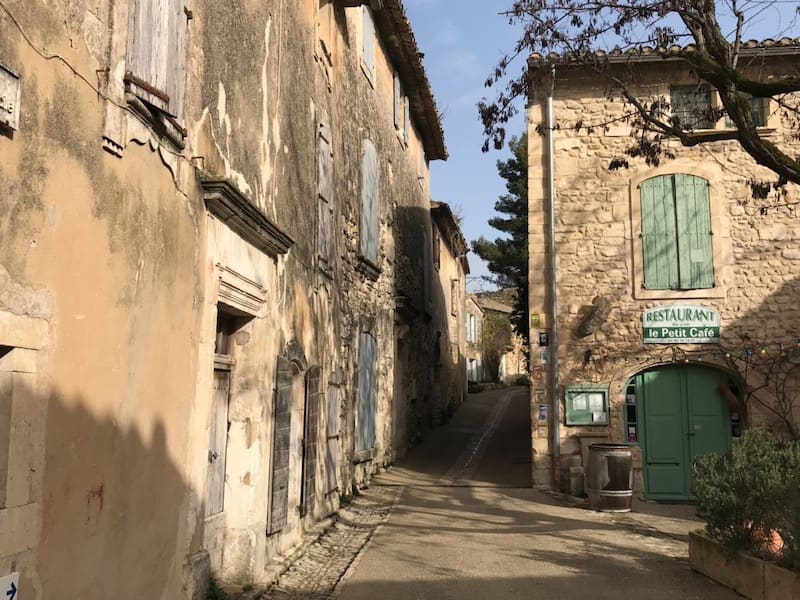
Oppède-le-Vieux history: a village abandoned and rediscovered
It was in the 12th century that Oppède-le-Vieux took shape, a fortified village spreading around its castle and church.
The village prospered and its agriculture boomed, surrounded as it was by vines and olives and cereals. It controlled routes between Apt and the Comtat Venaissin, a papal enclave in Provence whose rule provided it with protection and stability.
The village was overseen by the powerful Maynier family, who became lords of Oppède-le-Vieux, bringing it prestige and wealth. At the top of the village, the castle and the church of Notre-Dame-d’Alydon dominated the skyline - they still do.
By the 1500s, religious unrest had spread from Germany and small communities of Vaudois, early reformers who rejected papal control and followed a simpler faith, lived throughout the Luberon.
Acting under orders signed by both François I and the pope, Jean Maynier d’Oppède, First President of the Parliament of Aix and lord of the castle, set off in 1545 to destroy nearby Vaudois villages like Mérindol and Cabrières-d’Avignon.
During the violent campaign, people were killed or sold into slavery, and local memory tells of women and children locked in churches and burned, and fugitives hunted down in caves.
 The way up to the castle and church ©OffbeatFrance
The way up to the castle and church ©OffbeatFranceBy the 17th century, decline was setting in. The village was hit by plague and landslides, and residents began leaving its steep slopes for more accessible farmland below, where a new village, simply called Oppède, would grow.
If you'd visited Oppède-le-Vieux once the 20th century rolled around, you would have found a village that was nearly abandoned, its houses in semi-ruin and its streets overgrown.
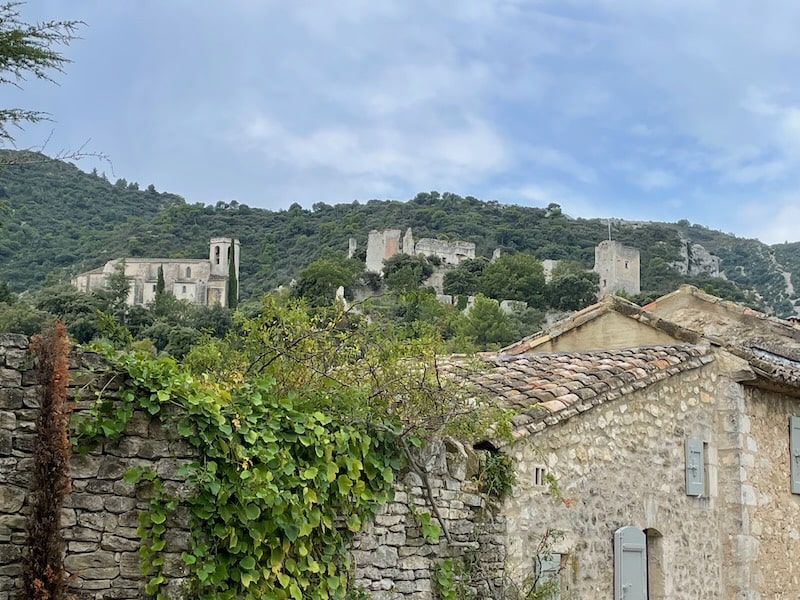 Typically overgrown wall in Oppède-le-Vieux ©OffbeatFrance
Typically overgrown wall in Oppède-le-Vieux ©OffbeatFranceThe decay had a respite in the 1940s, when a handful of artists and architects rediscovered the abandoned village, and started repairing old houses and breathing life back into its cobblestones. They became known as the Groupe d’Oppède, and their renovations still speak to us today.
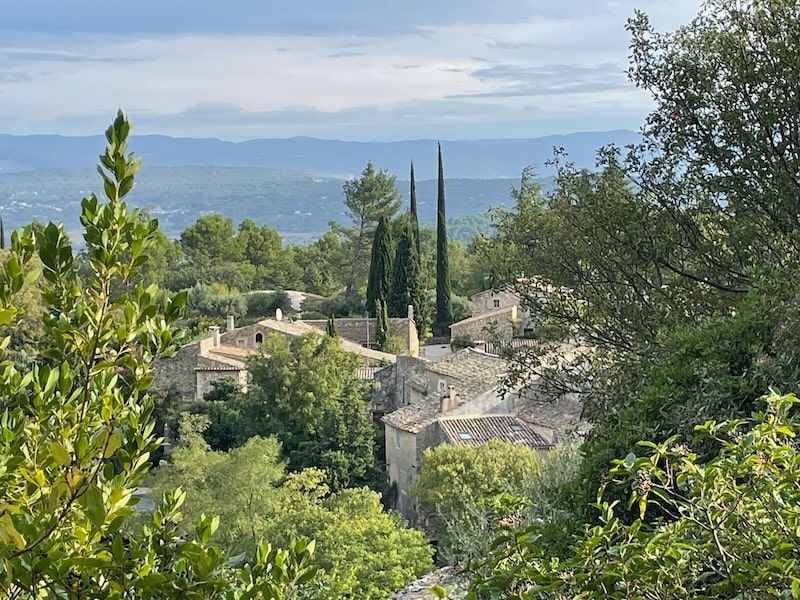
Things to do in Oppède-le-Vieux
Given the village's history, it should come as no surprise that this is a village worth getting to know, with plenty of things to see.
Explore the castle ruins - from afar
In 1394, during the Western Schism, supporters of the Avignon pope Benedict XIII seized the fortress. Rome had its own pope at the time, making Benedict an antipope, a rival with more ambition than legitimacy.
Local lore claims that when his enemies advanced, Benedict sprouted devil’s wings and leapt from a high window before vanishing toward Spain (his homeland). Folklore, perhaps — but the story stuck, and the window in question sits alone on forbidding tower façade.
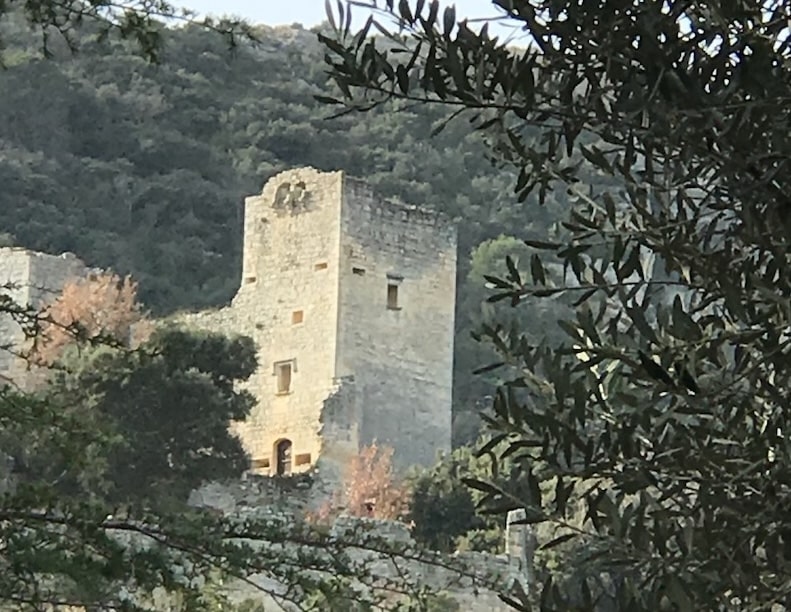
The linking of Maynier and the fortress of Oppède remains one of the darkest chapters in Luberon history. (You can read more about the Religious Wars in the Luberon in my Substack piece.)
The château endured another blow in 1731, when an earthquake toppled its towers and left behind the ruins that still crown Oppède today.
For the time being, the castle - fortress, actually - isn't accessible, and a fence keeps people away from the dangerous ruin. Its renovation is a bit irregular, managed by an association of volunteers who seek funds to continue the work and who hope to eventually reopen parts of it.
Climb to Église Notre-Dame-d’Alydon
The collégiale Notre-Dame-d’Alydon above the fortress dates back to the 11th century, though it was heavily rebuilt in the 16th and 17th centuries. It is officially a historical monument and reflects the village’s long religious role in the Luberon.
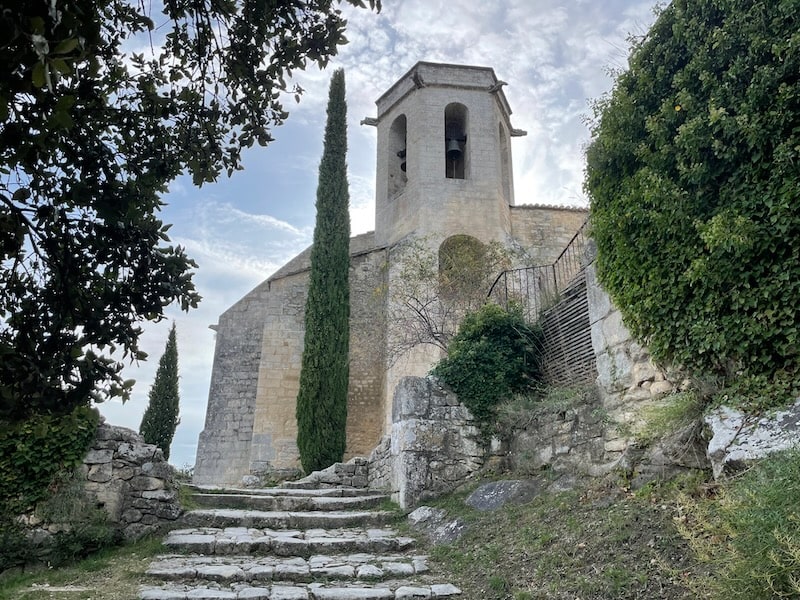
Inside behind the altar is a painting attributed to the 17th-century Provençal artist Reynaud Levieux. It shows the Virgin handing a rosary to Saint Dominic, accompanied by Saint Catherine of Siena.
The dog with a torch in its mouth — the traditional symbol of Saint Dominic — completes the scene.
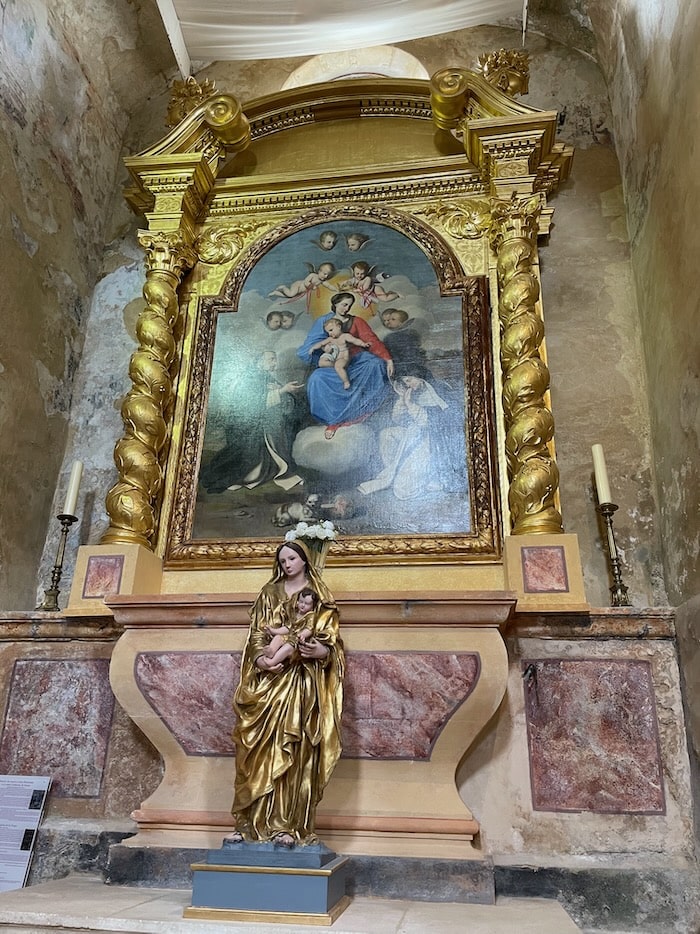 Reynaud Levieux's painting inside the church (forgive my poor lighting!) ©OffbeatFrance
Reynaud Levieux's painting inside the church (forgive my poor lighting!) ©OffbeatFrance
Look for traces of the Groupe d’Oppède
Oppède-le-Vieux saw an unlikely revival in the 1940s, when sculptor François de Asis and art director Alexey Brodovitch — already famous in New York as photographer and art director for Harper’s Bazaar magazine — settled here.
THE GROUPE D'OPPÈDE
In 1940, a small group of architecture students took up residence here and would evolve into what became known as the “Groupe d’Oppède.” They included Bernard Zehrfuss, later one of the architects of UNESCO headquarters in Paris, and fellow artists who turned the village into a discreet creative hub. They moved into old stone houses and turned the village into a magnet for painters, musicians and writers, but only stayed a few years.
When Brodovitch invited his circle south, they made their way to Oppède-le-Vieux where they lived communally, rebuilding walls and repairing houses alongside local masons.
The 1943 “Nuit d’Oppède”, a series of artistic performances by the group's members, marked the height of their experiment; soon after, the group dispersed and the village again fell silent, although you'll still find a few traces of their passage.
These days, it still attracts artists of all kinds, from comedians to photographers to British filmmaker Ridley Scott, all drawn by the same mix of ruin and renewal that inspired the Groupe d’Oppède.
Wander the lanes and enjoy the views
The best way to experience Oppède-le-Vieux is simply to walk its calades, the steep, cobbled lanes that wind past ruined façades and partly restored houses. Some buildings stand roofless, ivy climbing their walls, while others have been carefully repaired and are lived in again. This mix of ruin and revival gives the village an atmosphere not quite like that of other Luberon hill towns.

As you climb higher, the views open wide across the Calavon valley and the northern slopes of the Luberon. From the church terrace near Notre-Dame-d’Alydon you can look east toward Mont Ventoux and west across the Durance plain. These panoramas explain why the site was fortified for centuries, and why today it remains one of the most striking viewpoints in the region.
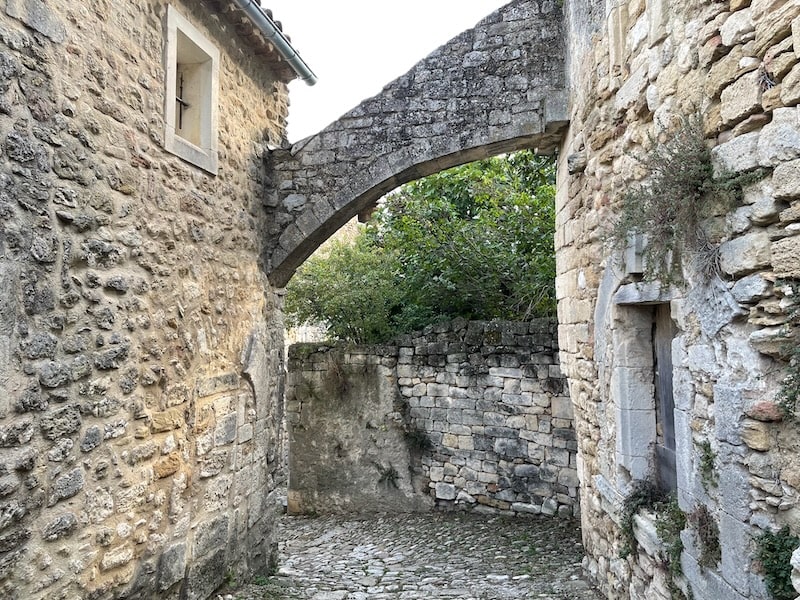
Visiting Oppède-le-Vieux today: what to expect
Getting to Oppède-le-Vieux is simple but takes a bit of effort, as a winding slope leads you up through gardens into the village. Once there, you'll be facing cobblestones and uphills. But of such beauty...
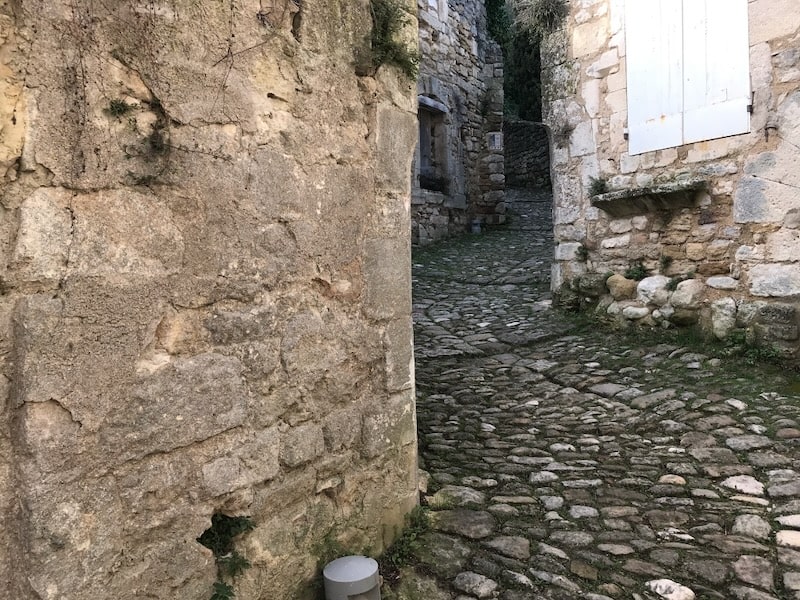
When visiting Oppède-le-Vieux, you can also visit Ménerbes and Lacoste for a short loop, or Gordes and Goult as part of a broader western Luberon circuit.
This is not a typical tourist village and while there are a few services opening, like the restaurant near the village entrance, it is still relatively untouched by the modern world.
Where to stay and eat near Oppède-le-Vieux
Because Oppède-le-Vieux isn't geared for tourists, you'll have to go a bit further afield if you'd like spend the night.
Where to stay in Oppède-le-Vieux
You can’t stay inside Oppède-le-Vieux itself — the stone lanes are too steep for cars, and the old houses are mostly private.
But just below, in the newer village of Oppède, you’ll find plenty of gîtes and chambres d’hôtes surrounded by vines and cypress trees.
The nearby village of Ménerbes also has plenty of accommodation nearby, and I stay in Bonnieux, 25 minutes away, and recommend the Clos du Buis hotel.
If you’re after a quieter experience, choose a rural gîte among the olive groves; for more amenities, stay in Ménerbes or Bonnieux, where you’ll find markets and a few relaxed restaurants.
Where to eat around Oppède-le-Vieux
Inside the old village, dining is limited to one or two seasonal spots near the entrance — simple Provençal fare served under the plane trees, ideal after the uphill walk.
Le Petit Café in the center is perfect for that little rest after your climb and serves Provençal food. There's also L'Echaugette, but I haven't tried it - it's usually closed when I visit out of season.
Most visitors head down to the modern village of Oppède down below, where you’ll find a handful of small restaurants and wine bars. Local menus tend to include olive oil, goat cheese and garden vegetables, often with views toward the ruined château.
For more variety, head for Ménerbes, where you'll find several good places to eat along the "main" street and beyond, with everything from casual bistros to elegant farm-to-table kitchens.
FAQ
How do I get to Oppède-le-Vieux?
How do I get to Oppède-le-Vieux?
From the D900, follow signs to Oppède, then continue toward the upper village. There's a small parking lot below the old village, about a 10-15 minute walk from the center.
How long does it take to walk up to the church in Oppède-le-Vieux?
How long does it take to walk up to the church in Oppède-le-Vieux?
From the lower car park, it’s about a 15–20 minute uphill walk on cobbled calades. Allow more time if you want to stop and photograph the ruins along the way.
Can you go inside the château ruins?
Can you go inside the château ruins?
No — the château is privately owned and slowly being restored, so visitors can only view it from the outside. The silhouette and surrounding walls are still very photogenic.
Is the church of Notre-Dame-d’Alydon open to visitors?
Is the church of Notre-Dame-d’Alydon open to visitors?
Yes, the church is partly restored and open daily. Entry is free, but hours can be irregular, especially outside summer.
Where can I stay near Oppède-le-Vieux?
Where can I stay near Oppède-le-Vieux?
The village itself has no hotels, but nearby Oppède, Ménerbes and Bonnieux have gîtes and guesthouses and are within driving distance.
Before you go...
Oppède-le-Vieux is less about sightseeing checklists than about atmosphere. Its ruined castle, weathered church, and ivy-covered houses make it one of the most evocative villages in the Luberon.
If you enjoy places where history is tantalizingly visible, you’ll find more suggestions in my guide to the lesser-visited villages of the Luberon.
Did you enjoy this article? I'd love if you shared it!

